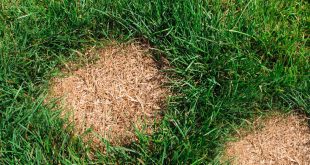This post may contain affiliate links. Please read our disclosure.
If you’ve ever wondered when dog food was first invented, look no further. We’ll explore the fascinating history of this canine staple, from its early beginnings to the present day. From homemade dishes in Ancient Rome to kibble that revolutionized pet nutrition, discover how a simple grain-based meal has evolved over centuries into an industry worth billions of dollars today.
Article Contents
When was Dog Food Invented?
It may come as a surprise to some, but dog food is a relatively recent invention. Although dogs have been domesticated for thousands of years, it wasn’t until the late 19th century that commercial pet foods began to appear in stores. Prior to this time, most people fed their pets scraps from the table or cooked them meals from scratch.
The origins of dog food can be traced back to an entrepreneur by the name of James Spratt. In 1860, he created what was called “Spratt’s Patent Meat Fibrine Dog Cake” which consisted of wheat meal, vegetables and beef blood – with added minerals and vitamins for balance nutrition. This product was sold in tin boxes and quickly became popular with British owners wanting convenient solutions for feeding their canine companions.
In subsequent years other brands began selling canned meat products made up mostly of offal (internal organs) such as heart and liver which were considered more palatable than Spratt’s original formula! Not only did these new products provide essential nutrients but they also allowed owners to meet the dietary needs of different breeds without having to cook multiple meals each day – something that would have been impossible before industrialization took place in Europe during the 1800s.
Today there are countless varieties available on store shelves including dry kibble formulas, wet canned products and even freeze-dried raw diets – all designed to meet your pup’s specific nutritional needs while providing convenience at home or on-the-go!
History of Dog Food
When it comes to our furry family members, nothing is more important than their nutrition. For centuries, humans have been feeding dogs food made of grain and other ingredients. From the ancient Egyptians to the first dog biscuits in Victorian England, we’ve always sought ways to provide better nutrition for our canine companions.
The history of commercial dog food dates back to the late 1800s when James Spratt introduced his “Meat Fibrine Dog Cakes” which were sold through department stores in London. He based these on a biscuit-like product he had seen sailors eating while aboard ships sailing from Britain to America. Soon after this innovation, other brands began popping up throughout Europe and North America with similar products that focused on specific ingredients like grains or vegetables.
In the 1920s canned wet foods became popular as companies started using meat byproducts instead of whole cuts as well as adding preservatives for longer shelf life. The addition of vitamins and minerals was also common during this time period due to increasing awareness about proper pet nutrition among owners. By mid century kibble had become commonplace with manufacturers offering different sizes and shapes designed specifically for various breeds of dogs such as large breed or small breed formulas .
Today there are dozens if not hundreds of varieties available catering to an array of dietary needs including special diets for puppies, seniors or overweight animals just to name a few examples . There are also organic options free from artificial colors/flavors , non-GMO , gluten free etc so choose wisely according your pup’s individual preferences !
Evolution of Commercial Pet Food
When we look back at the evolution of pet food, it’s amazing to see how much has changed in such a short period. From the earliest days when commercial pet food was made available as a convenient way for busy owners to feed their pets, to today where our furry friends have access to an array of options tailored specifically to meet their individual nutritional needs.
The early years saw pet food primarily comprised of animal by-products with very little consideration given to nutrient-dense ingredients that would support optimal health and wellness. But over time, science and technology have enabled us to get more creative with formulations that provide superior nutrition while still supporting palatability. We now have access to grain-free formulas, high protein recipes, limited ingredient diets and blends containing prebiotics & probiotics – all designed with your pet’s wellbeing in mind.
Today you can find premium quality dry foods filled with wholesome deliciousness like fresh fruits & vegetables; natural sources of vitamins & minerals plus carefully selected proteins sourced from humanely raised animals – all crafted into a balanced diet suitable for every life stage from growing puppies through seniors cats and dogs alike!
Types of Dog Foods Available
When it comes to selecting the best food for your canine companion, there are a variety of options to choose from. Depending on the age and breed of your dog, you may opt for dry kibble, canned wet food, or even treats. All offer different benefits that can help keep your pup healthy and happy.
Dry kibble is usually the most economical choice when it comes to feeding your pooch. It provides essential nutrients such as vitamins and minerals that are necessary for good health. In addition, many brands contain added flavors and textures that make mealtime more enjoyable for dogs who might be picky eaters. Canned wet foods are also an option; this type of food typically contains higher amounts of moisture than kibble does which can helps support hydration in active pups during warmer months or after long walks. Other ingredients such as vegetables, fruit and fish oils provide additional nutritional value not found in dry foods alone.
Treats should only be given sparingly due to their high-calorie content; however they come in handy when training or rewarding good behavior! Look out for those made with natural ingredients like applesauce without artificial colors or preservatives – these are some healthier choices available today compared to traditional treats sold at pet stores years ago. Additionally you’ll find freeze-dried raw snacks that mimic what wild predators would consume in nature – another way to give your pup something special while keeping them healthy too!
How to Choose the Right Kind of Dog Food
Choosing the right kind of food for your pup can be overwhelming. With so many options out there, it’s hard to know what will be best for your pooch. Here are some tips to help you make an informed decision and give your canine companion the nutrition they need:
First, consider their age, size and lifestyle. Puppies require different nutrients than senior dogs or those with special needs. A large breed dog may also require a different diet than a small one due to their higher caloric needs. Also take into account how active your pet is – an agility champion will have very different dietary requirements from a couch potato!
Next, look at the ingredients list on the back of any food you’re considering purchasing. Meat should appear near the top as this indicates that it makes up most of the product; avoid anything containing by-products or fillers such as cornmeal which provide little nutritional value to your pup. Quality brands tend to use whole grains like brown rice instead as these offer more benefits in terms of energy and vitamins & minerals. Additionally, check if any artificial colors or flavors are present – these don’t add any health benefits but can cause allergies in some pets so it’s best avoided if possible!
Finally, read reviews online before buying anything – these can help you get an idea of how other pets have reacted to certain formulas and provide valuable insight into whether something could work well for yours too! Plus when shopping online make sure that all products come recommended by veterinarians as this means they meet high standards of quality control standards – meaning you won’t be wasting money on subpar foods for Fido!
Potential Health Risks Associated with Poor Quality Dog Foods
When it comes to choosing the food for our furry best friends, many of us may not give much thought to what we’re feeding them. But making sure that your dog is receiving quality nutrition, with only the highest grade ingredients, should be a top priority. Poor quality foods can pose potential health risks for dogs in a number of ways and understanding these risks is an important step towards providing your canine companion with optimal care and wellbeing.
The most common concern related to poor quality dog foods are nutritional deficiencies. Low-grade ingredients used in such products often lack essential vitamins or minerals needed by our four-legged friends. In some cases, this can lead to serious conditions such as malnutrition or vitamin deficiency diseases like Rickets if left unchecked over time. In addition, low-quality food products also tend to contain unhealthy fillers which provide little more than empty calories – leaving dogs feeling hungry without actually meeting their daily nutritional needs.
Furthermore, poorly made pet foods may sometimes contain harmful contaminants from production processes or from low grade ingredients used during manufacture; even when they meet certain regulatory standards they still might not be safe enough for consumption! A good example would be certain industrial chemicals commonly found in plastic packaging which have been linked to cancer development in humans and animals alike; these same chemicals can leach into pet food if improperly stored or handled during distribution and storage cycles prior to purchase by consumers! Last but not least, some lower cost brands may include artificial flavoring agents which could pose potential risk due to their toxic nature when consumed regularly over time – so it’s always important double check labels before buying any type of pet product!
• Potential nutrient deficiencies leading to malnutrition
• Unhealthy fillers providing empty calories
• Contamination from production processes/low grade ingredients
• Artificial flavouring agents posing potential risk
Nutritional Requirements for Different Breeds and Ages
of Dogs
When it comes to providing our furry friends with the best nutrition possible, it’s important to consider their breed and age. While all dogs have similar nutritional needs in terms of macronutrients (proteins, carbohydrates and fats), each breed has its own specific caloric requirements according to size, age, activity level and health condition.
For example, puppies require more calories per kilogram than adults due to rapid growth and development; whereas large breeds should be fed smaller meals throughout the day as they have an increased risk of developing gastric dilatation-volvulus (GDV). Similarly, senior dogs may need a different balance of macronutrients than younger adults.
Generally speaking:
• Puppies need higher levels of proteins and fat;
• Large breeds need fewer calories per kg but split into several small feeds for better digestion;
• Senior dogs may benefit from a low-fat diet that is easier on their digestion system;
• Working or sporting dog breeds will require more calories depending on the degree of exercise performed during training sessions.
The key takeaway here is that there isn’t one single solution for every dog – every pup deserves individualized attention when it comes to diet. If you are unsure about your pet’s nutritional needs consult your veterinarian who can provide tailored advice based upon your pooch’s individual characteristics such as breed type, age group, body condition score etc., so you can ensure they receive optimal nutrition.
Wrap up!
In conclusion, dog food has been around since the 1800s and come a long way in terms of quality. With so many options available to choose from, it can be overwhelming for pet owners. However, it is important to select one that meets the nutritional needs of your pup based on their age, breed and lifestyle. Poor-quality dog foods can have potential health risks associated with them so pet owners should take caution in selecting the right kind for their furry companion.
FAQ
when was dog food invented?
Dog food was first invented in the 1860s, when James Spratt created a biscuit made from wheat meals, vegetables, beetroot and beef blood.
What types of dog foods are available?
There is a wide variety of dog food products to choose from. Dry kibble is one of the most common options, but there are also wet canned foods, semi-moist treats, freeze dried raw diets and dehydrated raw diets. Additionally, many pet owners now opt for grain-free and organic varieties as well.
How do I know which type of dog food is best?
The best type of dog food will depend on your individual pup’s needs. Factors such as age range (puppy or adult), activity level and health conditions should be taken into consideration when selecting a diet for your furry friend. If you’re ever unsure what to feed your pup it’s always wise to consult with your veterinarian who can advise you accordingly based on their expertise and knowledge about nutrition for dogs.
Are homemade foods an option for dogs?
Yes! Homemade meals can be tailored specifically to meet each pup’s specific dietary needs and preferences if desired; however it does require extra effort from pet parents in terms of sourcing ingredients that meet nutritional requirements as well as ensuring proper preparation methods are followed so not to cause harm or illness due to improper cooking techniques/undercooked proteins etc.. It may be beneficial consulting with a veterinary nutritionist prior to transitioning any pet onto home cooked meals if possible – they can help ensure balanced recipes that adequately provide all essential nutrients needed by growing puppies or adults alike!
Should my pet have access to fresh water at all times?
Absolutely! Fresh clean drinking water should always be accessible for pets – this helps maintain optimal hydration levels throughout the day especially when combined with regular exercise routines & physical activities outdoors etc.. Water intake often increases during warmer months so its important adequate amounts are provided alongside nutritious balanced meal plans – dehydration can lead serious medical issues including kidney failure in extreme cases so preventive measures should be taken seriously & monitored closely whenever necessary!
 Petnile Comprehensive Pet Care Guides
Petnile Comprehensive Pet Care Guides



